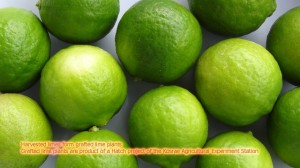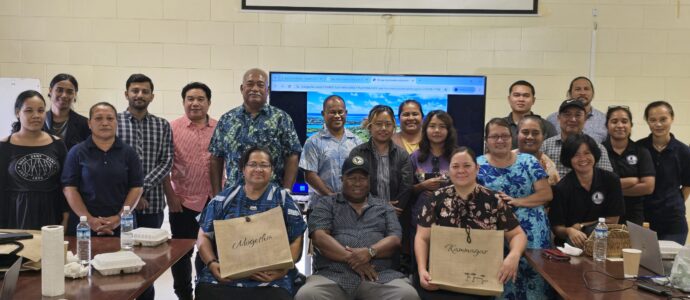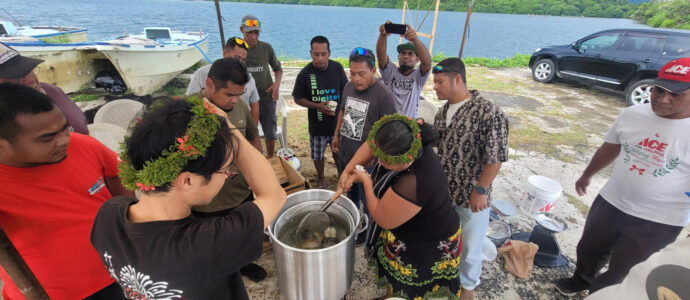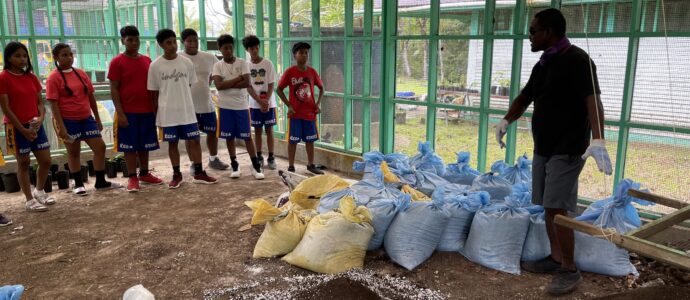KOSRAE, FSM. Dr. Virendra M. Verma, Researcher/Extension Specialist, Kosrae Agricultural Experiment Station.
Dr. Verma, Project Director of grafting project procured budwood of Mexican lime from the Citrus Clonal Protection Program, University of California and the United States Department of Agriculture National Clonal Germplasm Repository for Citrus & Dates. Procured Mexican lime budwood was grafted on sour orange rootstock. For subsequent growth grafted plants were kept in the greenhouse. Seeds of sour orange were surface sterilized with commercial sodium hypochlorite bleach and in vitro aseptic cultures of sour orange were established for rootstock production. Murashige and Skoog, 1962 (MS) medium augmented with different concentrations of 6-furfurylaminopurine, 6-benzylaminopurine and indole-3-acetic acid was used for initiation and establishment of sour orange rootstock cultures. Nodal explants of Mexican lime were surface sterilized with commercial sodium hypochlorite bleach and lateral shoot buds were used for in vitro grafting experiments. Subsequent passages were given every four weeks on MS medium augmented with different concentrations of 6-furfurylaminopurine, 6-benzylaminopurine and indole-3-acetic acid for further growth. Data for in vivo and in vitro grafting experiments were recorded every week.

Both in vivo and in vitro grafting experiments showed positive results and sour orange rootstock accepted Mexican lime and Mexican lime thorn-less budwood. In vivo grafting experiments were performed during summer with 40% success rate for Mexican lime thorn-less budwood on sour orange rootstock while 10% success rate for Mexican lime budwood on same rootstock. In vivo grafted plants showed sprouting in the new bud during spring. In vitro grafting experiments were performed with 48% success rate for Mexican lime thorn-less budwood on sour orange rootstock. Participants skills and knowledge about in vitro and in vivo grafting techniques have been increased through collection and review of related literature; experimentation on in vitro and in vivo grafting; establishment of cultures; development of in vitro and in vivo grafting protocols; and production of elite grafted lime seedlings. The project has developed positive attitudes, zeal for learning techniques and has changed the behavior of the participants. Based on the data analysis of research carried out through this project, another project on mass-production of elite grafted citrus seedlings will be initiated.





